BI SEARCH AND TEXT ANALYTICS - The Data Warehousing Institute
BI SEARCH AND TEXT ANALYTICS - The Data Warehousing Institute
BI SEARCH AND TEXT ANALYTICS - The Data Warehousing Institute
You also want an ePaper? Increase the reach of your titles
YUMPU automatically turns print PDFs into web optimized ePapers that Google loves.
<strong>BI</strong> <strong>SEARCH</strong> <strong>AND</strong> <strong>TEXT</strong> <strong>ANALYTICS</strong>Text Mining and Text Analytics Compared and ContrastedText MiningText AnalyticsApproachBoth employ natural language processing (NLP) algorithms to parse text and record entities found there.When to useWhen you don’t know what’s in the text or what youneed to extract from it.When you know what’s in the text and what you needto extract from it.Types ofsourcesWith either, text can be anywhere accessible, including various types of files, repositories, databases, orcontent management systems.Quantity ofsourcesOutputUse ofoutputApplicationsSynonymsMost configurations operate on large numbers ofdocuments, possibly across many repositories, tounderstand what topics these documents mention.A taxonomy of entities (with links to their sources).<strong>The</strong> taxonomy is analytic in nature, since it hasclassified the content it parsed and even organizedthe taxonomy by how found entities relate.<strong>The</strong> taxonomy may double as a navigation mediumthrough which users access source documents.Classifying content in large bodies of documents(possibly in content management systems or portals)in media (especially publishing), research (especiallypharma), federal intelligence agencies, etc.Content classification, topic clustering,taxonomy generationMost configurations operate on one or a small numberof unstructured data sources, the content of whichyou understand well.A stream of records, each describing an entityinstance. <strong>The</strong>se records usually go into a databasetable or file, less often into a search index.<strong>The</strong> resulting database or index is itself not analyticper se, but it’s used as a source for standard reportsor statistical analysis.Risk analysis, fraud detection, call center analysis,product service reports, regulatory reporting,customer base segmentation, other customeranalytics, etc.Entity extraction, concept extraction, concept searchTable 1. Text mining helps you discover the evolving list of entities that are mentioned in a text source, whereas textanalytics extracts information about a constant list of entities.Use Cases for Text Analytics<strong>The</strong>se use cases are largely configurations of text analytics, plus integration with other systems, likedata warehouses, integration tools, and predictive analytics applications. <strong>The</strong> list gives users andtheir business counterparts examples of how they can leverage text analytics, as well as technicalrequirements and business reasons for each use case.Entity extraction isthe foundation of textanalytics, upon whichare built intelligentapplications for entityclustering or taxonomygeneration.Entity Extraction as the Foundation of Text AnalyticsAn absolute requirement of text analytics is entity extraction, which takes priority over secondaryfunctions like classifying the extracted entities (via taxonomy generation) or analyzing them (viaentity clustering). In fact, as we’ll see from many of its use cases, text analytics is more like a dataintegration task than a data analysis task. This report has already discussed the types of entities thisprocess reveals, as well as why collecting this data is important. Let’s now look at how different usecases handle extracted entities:• Text analytics produces a record for each entity instance. When a text analytics toolrecognizes an entity in text, it looks for related facts (and possibly related entities) insurrounding text. It packages what it found (plus metadata about the data source, etc.) intoa record structure that describes the entity instance. Hence, the entity record is structureddata, which analytic tools require, although derived from seemingly unstructured data.22 TDWI RE<strong>SEARCH</strong>



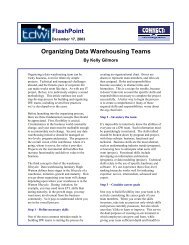
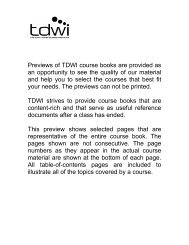

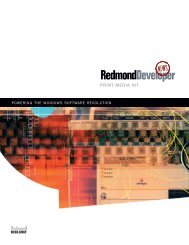


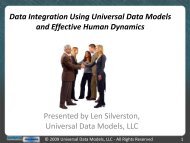
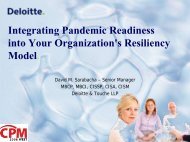
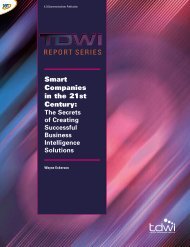
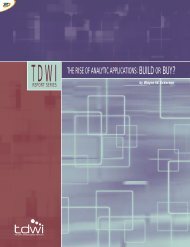
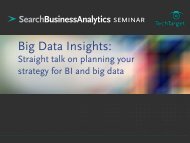
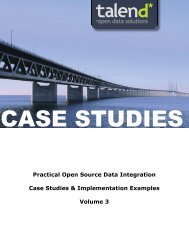
![Ink Jet Formulation- The Art of Color Chemistry 2005 [Read-Only]](https://img.yumpu.com/42062450/1/190x143/ink-jet-formulation-the-art-of-color-chemistry-2005-read-only.jpg?quality=85)
